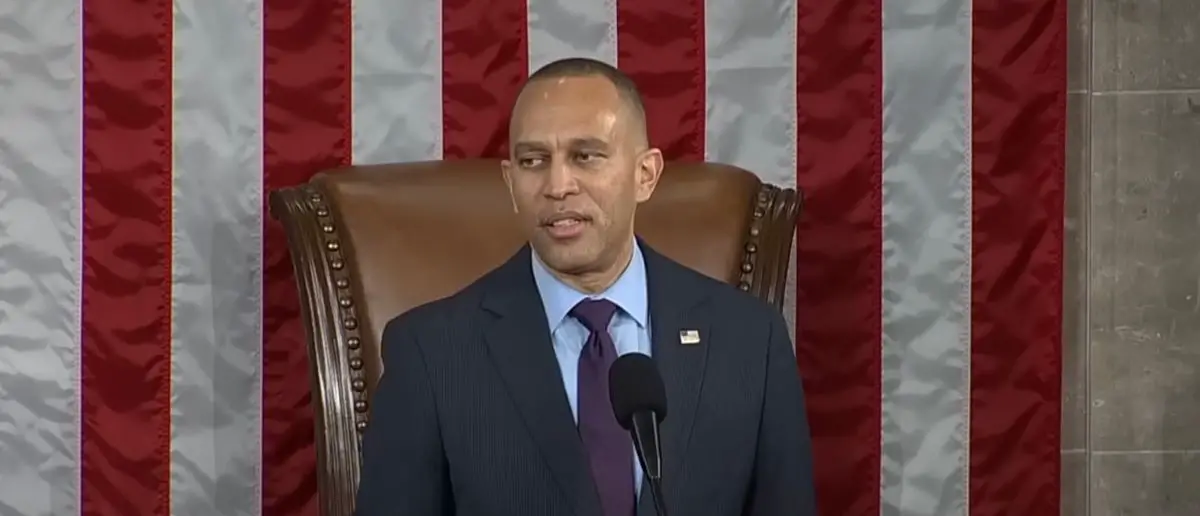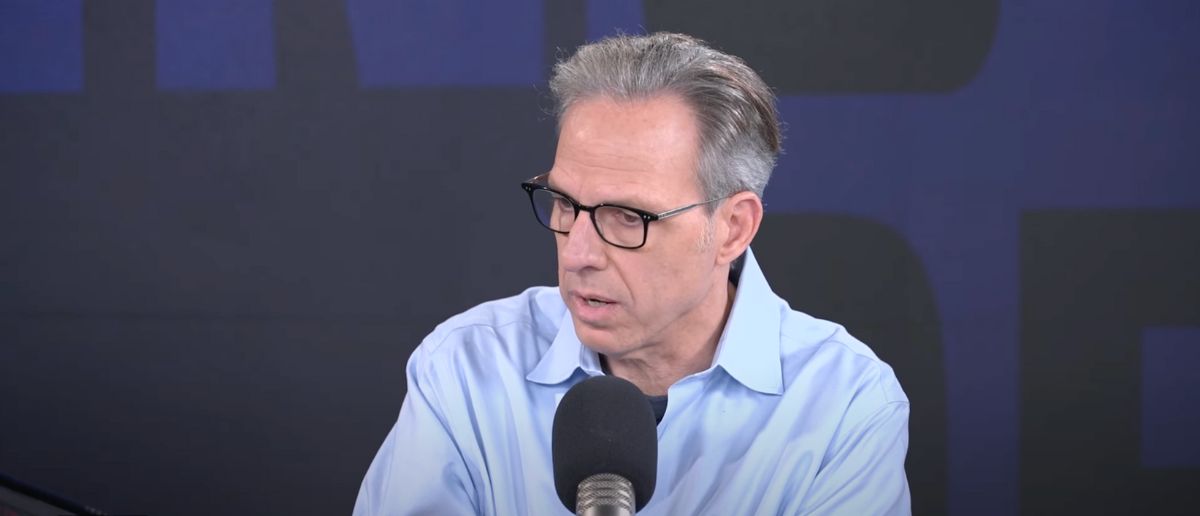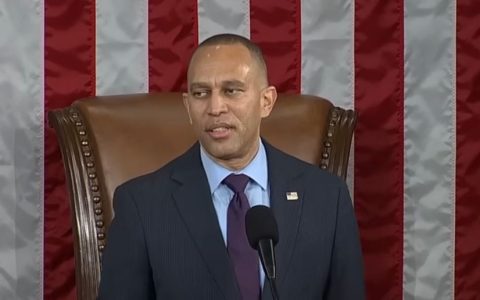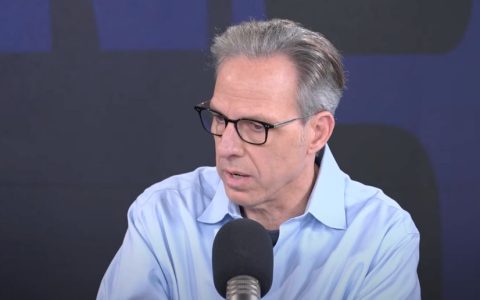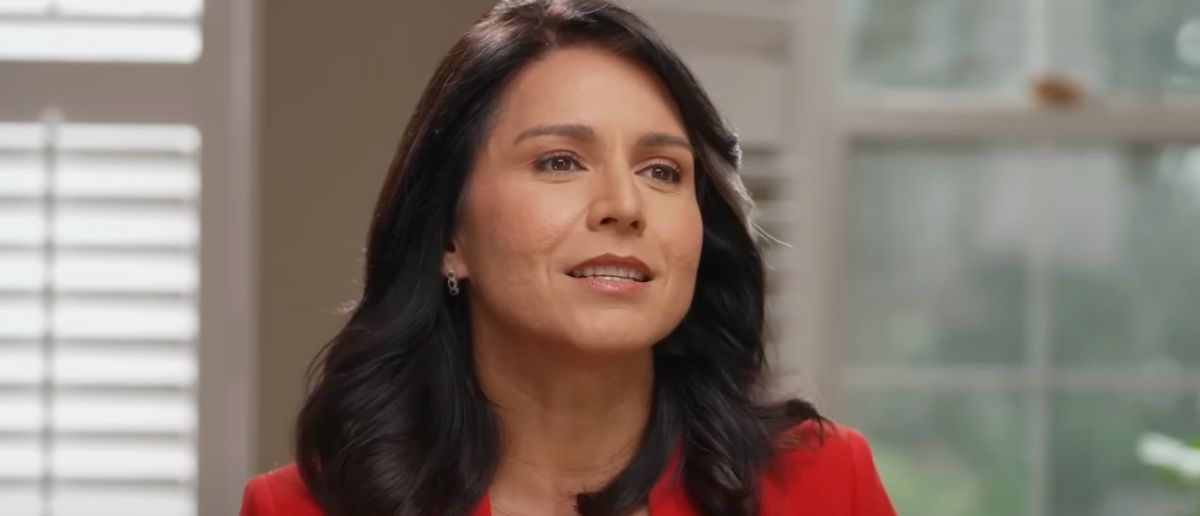
The Obama team is usually quiet. But their hive nest is buzzing in a panic.
That’s why Tulsi Gabbard just had to fire right back at Barack Obama with a cutting reality check.
DNI Tulsi Gabbard Doubles Down On Obama Coverup
On Wednesday, Director of National Intelligence Tulsi Gabbard announced that newly released documents indicate former President Barack Obama orchestrated efforts to fabricate claims of Russian interference in the 2016 election. Speaking at a White House press briefing, Gabbard revealed that a declassified House Intelligence Committee report suggests the Obama administration relied on the discredited Steele Dossier to assert that Russian President Vladimir Putin sought to aid Donald Trump’s 2016 presidential campaign.
“There is irrefutable evidence that details how President Obama and his national security team directed the creation of an intelligence community assessment that they knew was false,” Gabbard said, as reported by Fox News. She claimed the administration intentionally promoted a false narrative about Russian election meddling to favor Trump, presenting it as fact to the American public despite knowing it was untrue.
Gabbard further stated that the documents show a deliberate effort by the Obama administration to undermine Trump’s presidency before he took office. “All come back to and confirm the same report: There was a gross politicization and manipulation of intelligence by the Obama administration intended to delegitimize President Trump even before he was inaugurated, ultimately usurping the will of the American people,” she said.
The documents have been forwarded to the Department of Justice and the FBI for potential criminal investigations. “We have referred and will continue to refer all of these documents to the Department of Justice and the FBI, to investigate the criminal implications of this for the evidence,” Gabbard noted. She emphasized that the evidence explicitly points to Obama’s role in crafting the misleading intelligence assessment, supported by multiple sources.
Recent developments have reignited debates over actions taken by the Obama administration and Democratic officials that some claim were designed to challenge the legitimacy of Donald Trump’s 2016 election victory. The release of declassified documents, as highlighted by Gabbard, has fueled allegations that key figures in the Obama administration manipulated intelligence to cast doubt on Trump’s presidency. These claims center on the use of the Steele Dossier, a controversial report alleging ties between Trump and Russia, which critics argue was unverified and politically motivated.
The Steele Dossier, compiled by former British intelligence officer Christopher Steele, was initially funded by the Democratic National Committee and the Hillary Clinton campaign through a law firm. It alleged that Russia had compromising information on Trump and was working to support his election. The dossier’s inclusion in the January 2017 intelligence community assessment on Russian interference has been a point of contention, with critics arguing it lent undue credibility to unverified claims. A 2019 report by the Justice Department’s Inspector General found that the dossier’s information was “unverified and uncorroborated” but was still used in the FBI’s Trump-Russia investigation, known as Crossfire Hurricane.
Crossfire Hurricane, launched in July 2016, investigated potential ties between the Trump campaign and Russia. Declassified documents from 2020 revealed that some FBI officials expressed concerns about the investigation’s reliance on unverified sources, including the Steele Dossier. These documents also suggested that certain intelligence officials were aware of the dossier’s questionable reliability but allowed it to influence public and governmental perceptions of Trump’s campaign. This has led to accusations that the investigation was politically driven to undermine Trump’s legitimacy.
Further evidence cited by critics includes the actions of former FBI Director James Comey, who briefed President-elect Trump on the dossier in January 2017, shortly before its contents were leaked to the media. This briefing, followed by widespread media coverage, amplified allegations of Trump-Russia collusion, shaping public discourse in the early days of his presidency. A 2020 Senate Intelligence Committee report acknowledged that while Russia sought to influence the 2016 election, the extent of any direct coordination with the Trump campaign remained unclear, raising questions about the narrative’s initial framing.
Emails declassified in 2020 from former Obama administration officials, including then-National Security Advisor Susan Rice, have also been scrutinized. Rice’s email to herself, written on January 20, 2017, documented a meeting where Obama and others discussed how to handle intelligence related to Trump and Russia. Critics point to this as evidence of an orchestrated effort to frame Trump’s presidency as illegitimate, though defenders argue it was a routine discussion about national security protocols.
The role of the media in amplifying the Russia narrative has also come under fire. Reports from 2017 to 2019 often cited anonymous sources claiming Trump-Russia ties, which some now argue were fed by partisan leaks from within the intelligence community. A 2023 Durham Report, commissioned to investigate the origins of the FBI’s Trump-Russia probe, concluded that the investigation suffered from “confirmation bias” and relied on unverified information, lending credence to claims of politicization.
Testimony from former CIA Director John Brennan, a key figure in the Obama administration, has been cited as further evidence. In 2020, declassified notes from Brennan revealed he briefed Obama on intelligence suggesting the Clinton campaign planned to tie Trump to Russia as a means of deflecting attention from Clinton’s email controversy. This has been interpreted by some as an indication that the Russia narrative was a deliberate strategy to weaken Trump’s presidency.
Critics also point to the prolonged Mueller investigation (2017-2019), which investigated Russian interference and potential Trump campaign collusion. While the Mueller Report found no conclusive evidence of a criminal conspiracy between Trump’s campaign and Russia, its ambiguous language allowed the collusion narrative to persist in public discourse, further eroding trust in Trump’s presidency. Supporters of Gabbard’s claims argue this was an extension of the Obama administration’s efforts to delegitimize Trump.
On the other hand, defenders of the Obama administration argue that concerns about Russian interference were legitimate, given intelligence reports confirming Russia’s attempts to influence the 2016 election through hacking and disinformation campaigns. They contend that the Steele Dossier, while flawed, was one of many sources used to assess potential threats, and the FBI’s investigation was a necessary response to national security concerns. They also note that Obama’s administration took steps to counter Russian actions, such as expelling diplomats in December 2016.
Skeptics of Gabbard’s claims argue that the declassified documents do not provide definitive proof of Obama personally directing a campaign against Trump. They suggest that intelligence assessments are complex and involve multiple agencies, making it unlikely for one individual to control the narrative. Additionally, some argue that the dossier’s role was overstated, as other intelligence, such as the hacking of Democratic National Committee emails, independently pointed to Russian interference.
The release of these documents has prompted calls for further investigation. Gabbard’s referral of the materials to the DOJ and FBI suggests potential legal consequences if evidence of misconduct is substantiated. However, as of July, no formal charges have been announced, and the debate remains politically charged. Supporters of Trump view these revelations as vindication, while critics caution against drawing conclusions without comprehensive evidence.
Stay tuned to the DC Daily Journal.

